#crustacean invasion
Explore tagged Tumblr posts
Text
The little bugs in Maggie's enclosure make me happy. Look at these little bugs. They're just living their best lives.

20 notes
·
View notes
Text
Day in the life of a Guy. And not just any guy I think he's an invasive rusty red crayfish 🤨🦞
#crustacean#crayfish#rusty red crayfish#invasive#invasive species#animals#wildlife#beach#water#lake#lakeposting#nature#naturecore#new york#western new york#finger lakes#western ny#ny#ny state#new york state#video#me#mine#cute
38 notes
·
View notes
Text
doing research on the lake michigan ecosystem and ngl this stuff is depressing. the amount of invasive species across all ecological levels is Insane like there's not a single thing that hasn't been horribly impacted and worse is the fact that most of these invasions occurred in like the second half of the 1900s. like we did immense and irreparable damage to an incredibly unique subset of ecosystems that really doesn't show up anywhere else on earth in just 50 years? cool cool cool. cool.
#i hope you can hear my gritted teeth at the end there#I'm not even joking about the invasive species being everywhere either#like yeah there's the mussels and alewives and bigger fish but there's also fucking. invasive zooplankton and mini crustaceans#it's actually insane#megan.txt
10 notes
·
View notes
Text
Am looking at government jobs and one of them is like "requirements: extreme knowledge of invasive crustaceans, experience in warehouse operations, experience in type fast, experience in use computer" and I'm like...ok but how important exactly is knowledge of invasive crustaceans because the rest of that shit is my current job.
#chit chat#listen i know this is the kill invasive crustacean job but it does say 90% data entry on the tin#is this something that i can learn in a weekend#this job comes with government holidays#work stuff
5 notes
·
View notes
Text
"The Lower Ninth Ward of New Orleans has recently witnessed an incredible eco-renaissance following decades of damage and neglect.
Led by a local community development group, a 40-acre wetlands park has been restored to glories past with hundreds of local trees that attract over a hundred species of birds, plus joggers, picnickers, and nature lovers besides.
The story begins with Rashida Ferdinand, founder of Sankofa Community Development Corporation (CDC). Growing up in this historic part of New Orleans, where Black homeownership thrived, where Fats Domino was born, and where locals routinely went out into the wetlands to catch fish and crustaceans, she watched as it suffered from years of neglect.
Poor drainage, ruined roads, illegal trash dumping, and unmitigated damage from hurricanes slowly wasted the wetland away until it was a derelict eyesore.
In the name of restoring this wild heritage indicative of the culture in the Lower Ninth, and in order to protect her communities from flooding, Ferdinand founded the Sankofa CDC, and in 2014 entered into an agreement with the City of New Orleans for the restoration of Sankofa—a 40-acre section of neglected wetlands in the heart of the Lower Ninth.
The loss of Sankofa’s potential to dampen flooding from storms meant that over the years dozens of houses and properties were flooded and damaged beyond the ability of the inhabitants to recover. Forced out by a combination of nature’s fury and government failure, the cultural heritage of the community was receding along with the floodwaters.
Ferdinand knew that restoring natural flood barriers like Sankofa was key to protecting her community.
“Hurricane protection is a major concern in the community, but there’s a lack of trust in the infrastructure systems that are supposed to protect us,” Ferdinand told the Audubon Society.
Today, Sankofa Wetlands Park is a sight to behold. Hiking trails snake through a smattering of ponds and creeks, where bald cypresses and water tupelo trees continue to grow and cling to the ground even during storms. Picnic benches have appeared, wheelchair-accessible trails connect sections of the park to parts of the Lower Ninth, and local businesses are seeing more visitors.
It needed a lot of work though. Thousands of invasive tallow trees had to be uprooted. 27,000 cubic meters of illegally dumped trash compacted into the dirt had to be removed. A 60-year-old canal dug by the US Army Corps of Engineers had to be disconnected, and all new native flora had to be planted by hand.
Audubon says that Ferdinand routinely can’t believe her eyes when she looks at the transformation of Sankofa into its current state.
“Seeing butterflies, birds, and other pollinators in the park is a sign of a healthy ecosystem,” she says. “All we had to do was create the right conditions.”
Slated for official completion in 2025 with an outdoor amphitheater, interpretive signage, and additional trails, Ferdinand and the CDC have their eyes set on an even larger area of wetlands to the north of Sankofa.
Along the way, Ferdinand and the CDC attracted many helping hands, and entered into many partnerships, But the catalyst for change arose from the spirit and determination of one woman in the right place at the right time, for the benefit of hundreds in this historic heart of a historic city."
-via Good News Network, September 17, 2024
#new orleans#louisiana#nola#united states#wildlife#wetlands#ecology#ecological restoration#conservation#good news#hope
3K notes
·
View notes
Text
Birds Sing Anew After Residents of New Orleans Ninth Ward Restore 40-Acre Wetland to Historic Glory https://www.goodnewsnetwork.org/birds-sing-anew-from-within-40-acre-wetland-restored-by-residents-of-n-orleans-historic-lower-ninth/
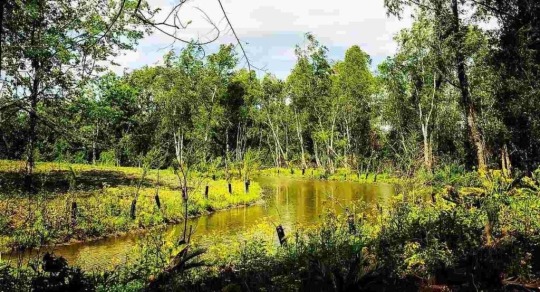
The Lower Ninth Ward of New Orleans has recently witnessed an incredible eco-renaissance following decades of damage and neglect.
Led by a local community development group, a 40-acre wetlands park has been restored to glories past with hundreds of local trees that attract over a hundred species of birds, plus joggers, picnickers, and nature lovers besides.
The story begins with Rashida Ferdinand, founder of Sankofa Community Development Corporation (CDC). Growing up in this historic part of New Orleans, where Black homeownership thrived, where Fats Domino was born, and where locals routinely went out into the wetlands to catch fish and crustaceans, she watched as it suffered from years of neglect.
Poor drainage, ruined roads, illegal trash dumping, and unmitigated damage from hurricanes slowly wasted the wetland away until it was a derelict eyesore.
In the name of restoring this wild heritage indicative of the culture in the Lower Ninth, and in order to protect her communities from flooding, Ferdinand founded the Sankofa CDC, and in 2014 entered into an agreement with the City of New Orleans for the restoration of Sankofa—a 40-acre section of neglected wetlands in the heart of the Lower Ninth.
The loss of Sankofa’s potential to dampen flooding from storms meant that over the years dozens of houses and properties were flooded and damaged beyond the ability of the inhabitants to recover. Forced out by a combination of nature’s fury and government failure, the cultural heritage of the community was receding along with the floodwaters.
Ferdinand knew that restoring natural flood barriers like Sankofa was key to protecting her community.
“Hurricane protection is a major concern in the community, but there’s a lack of trust in the infrastructure systems that are supposed to protect us,” Ferdinand told the Audubon Society.
Today, Sankofa Wetlands Park is a sight to behold. Hiking trails snake through a smattering of ponds and creeks, where bald cypresses and water tupelo trees continue to grow and cling to the ground even during storms. Picnic benches have appeared, wheelchair-accessible trails connect sections of the park to parts of the Lower Ninth, and local businesses are seeing more visitors.
Visiting birders have recorded sightings of over 100 species of songbirds, ducks, near-shore waders of all kinds, egrets, and herons, and the park also acts as a home and refuge for otters, beavers, and a variety of amphibians and reptiles.
It needed a lot of work though. Thousands of invasive tallow trees had to be uprooted. 27,000 cubic meters of illegally dumped trash compacted into the dirt had to be removed. A 60-year-old canal dug by the US Army Corps of Engineers had to be disconnected, and all new native flora had to be planted by hand.
Audubon says that Ferdinand routinely can’t believe her eyes when she looks at the transformation of Sankofa into its current state.
“Seeing butterflies, birds, and other pollinators in the park is a sign of a healthy ecosystem,” she says. “All we had to do was create the right conditions.”
Slated for official completion in 2025 with an outdoor amphitheater, interpretive signage, and additional trails, Ferdinand and the CDC have their eyes set on an even larger area of wetlands to the north of Sankofa.
Along the way, Ferdinand and the CDC attracted many helping hands, and entered into many partnerships, But the catalyst for change arose from the spirit and determination of one woman in the right place at the right time, for the benefit of hundreds in this historic heart of a historic city.
#new orleans#good news#environmentalism#science#environment#nature#usa#restoration#rewilding#wetlands#conservation#climate change#climate crisis#animals#birds#trees#disaster prevention and preparedness
183 notes
·
View notes
Text
Round 2.5 - Ctenophora - Tentaculata




(Sources - 1, 2, 3, 4)
One of two classes of Ctenophora is Tentaculata, the “Tentaculate Comb Jellies.”
The common feature of this class is a pair of long, feathery, contractile tentacles, which can be retracted into specialised ciliated sheaths. Instead of stinging cells, the tentacles have colloblasts, which are sticky-tipped cells that trap small prey. Some species may flick their tentacles to lure prey by behaving like small planktonic worms. Body size and shape vary widely among tentaculatans. Some are bioluminescent, allowing them both to scare away predators and attract small prey: from microscopic larvae and rotifers to the adults of small crustaceans. They are named for the comb rows of cilia which they use to swim. The beating of these combs refract light, producing rainbow-like colors.
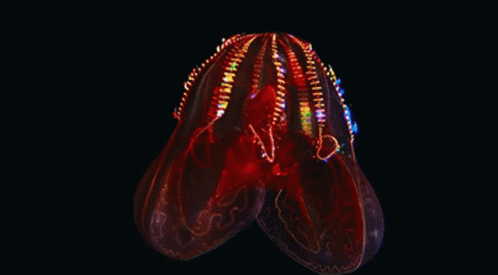
Propaganda under the cut:
The Redspot Comb Jelly (Eurhamphaea vexilligera) is unique in that it can actually produce bright orange-yellow ink as a means of escaping predators
The “Warty Comb Jelly” or “Sea Walnut” (Mnemiopsis leidyi) (though I grew up calling them “Leidy’s Comb Jellies”) (image 4) has an oval-shaped and transparent lobed body that glows blue-green when disturbed. It is biologically immortal, can consume ten times its body weight, and its anus only appears when it’s ready to defecate. They are native to western Atlantic coastal waters, but have become established as an invasive species in European and West Asian regions.
Named after the Greek goddess of sailors, the genus Leucothea can be identified by their oblong bodies which have fairly long lobes, taking up almost half of their length. They are transparent, bioluminescent, and have gelatinous spikes that are thought to serve a sensory purpose as they are found to point towards stimuli, the way a ship points towards its destination.
The Venus Girdle (Cestum veneris) (image 3) is the largest ctenophore of all known ctenophores, reaching up to a 1.5 metres (4.9 ft) in total length. Venus girdles resemble transparent ribbons with iridescent edges. Canals run the length of the ribbon in which bioluminescence activates when disturbed.
Haeckelia is a genus of ctenophore which is unique in that, instead of colloblasts, it has cnidocytes, explosive stinging cells usually only present in cnidarians. It does this by stealing and retaining cnidocytes from its cnidarian prey.
Some deep sea tentaculatans are blood red, as this allows them to be camouflaged in the deep sea, where red light does not reach.
47 notes
·
View notes
Text
Fish of the Day
Today's fish of the day is the redside shiner!

The redside shiner, scientific name Richardsonius balteatus, is a common minnow fish in the Western North America! Also called the Bonneville redside shiner, red-sided bream, Richardson's minnow, and silver shiner. Found in schools based around species, this fish has two currently named subspecies, those being R. b. hydrophylox and R. b. bealeatus, although recent data implies that this may not be the case, showing there may be three subspecies instead. However there isn't enough current knowledge to say for certain. These fish can be found across the Western North America, in Southern British Columbia, Alberta, and then across Washington, Oregon, Idaho, Nevada, Utah, Arizona, and Western Montana and Wyoming. Primarily found in the Columbia and Colorado river systems, in slow or still moving waters. These fish are native in Washington, Oregon, and Utah, but are invasive species harming salmonid populations in other locations. Common in lakes, mid-small sized rivers, ponds, ditches, and creeks, preferably found over gravel, sand, and vegetation. In the colder nights and winters, this fish is known to temporarily migrate to deeper waters, where they are more protected from the freeze.

These fish are small, only three inches in length as juveniles, and only up to 5-7inches (18cm) as adults. As fry these fish start a silver color, very similar to spawning salmon and trout, but as they age they can turn silver, brown, olive, and of course, in the breeding seasons red and gold. The fry feed on zooplankton, algae, crustaceans, and, the trait of which makes them a concern in nonnative areas, trout and salmon fry. These fish at all ages are opportunistic, eating anything they can, including their own fish eggs. Adults tend to eat: insects, aquatic or terrestrial, mollusks, plankton, small fish, and eggs. Due to their small size they're predated on by larger fish in their environments, along with loons, and minks.

During spawning season, which runs from May to July, males will turn a brassy color, and gain a red stripe running behind the eye and along the lateral line, signifying that they are of breeding age. Spawning occurs in the afternoon and evening when adults move to spawning streams (or lake fish will move to inlet streams), where females and males will pick one another to thrash side by side, variously releasing eggs and sperm. These eggs then are abandoned to stick to the bottom of the stream on rocks and vegetation. Eggs will then hatch in 14-15 days after fertilization, forming schools with the other various redside shiners hatching. This is the time in which some subspecies prey upon trout fry, and others simply compete with trout for food. These fish will then sexually mature around 2-3 years of age, and will live for around 5 in total.

That's the redside shiner, everybody! Thank you for being lenient well I've been on fish hiatus briefly as I got a feel for my school term. However, fish of the day should return for at least a few days a week, but I will be attempting to get these out all five days, so keep an eye out! Have a wonderful day!
Sources:
McPhail, J. D. (2007). Redside Shiner. Pearson Ecological. https://pearsonecological.com/fish-l2-single/redside-shiner/
Utah Natural Heritage Program. Species database - Utah Natural Heritage Program Field Guide. (2019). https://fieldguide.wildlife.utah.gov/?species=richardsonius+balteatus
Nico, L., & Fuller, P. (2004, August 6). Redside Shiner (Richardsonius Balteatus) - species profile. USGS Nonindigenous Aquatic Species Database. https://nas.er.usgs.gov/queries/factsheet.aspx?SpeciesID=644
#fish#fish of the day#fishblr#fishposting#aquatic biology#marine biology#freshwater#freshwater fish#animal facts#animal#animals#fishes#informative#education#aquatic#aquatic life#nature#river#redside shiner#redsided shiner#Richardsonius balteatus
41 notes
·
View notes
Text
I'm thinking about making a bugs and other arthropods iceberg, just for funsies
here are the ideas I have so far!
LEVEL 1: isopod cultures, difference between butterflies and moths, springtails are not insects, true bugs, fireflies are beetles, harvestmen aren't spiders, funky treehoppers, carcinisation, dragonfly and damselfly nymphs
LEVEL 2: importance of mosquitoes, larviform females, venezuelan poodle moth is a hoax, barnacles are upside down crustaceans, fly diversity, horshoe crabs are related to arachnids, mysid shrimps and krill are not related to true shrimp, crustacean zoea, insects are crustaceans, terrestrial amphipods, ant trophobiosis, funny weevils, whip spiders, playful behaviour in bees, assassin bugs that cover themselves in their prey's corpses, honeybees are invasive, 'spider with wings' hoax, hotwheels sisyphus, scorpions are great mothers, pistol shrimp
LEVEL 3: cockroaches do not spread diseases, gladiators, tongue eating lice aren't that bad, tongue worms, flightless flies and moths, hangingflies, spider that feeds on human blood*, hematophagous moths, polymorphic butterflies, myrmecophil insects, ant mimicking spiders, sawflies, twig spiders, snout mites, rove beetle tongues, kermesidae, parasitic copepods, there's no point in killing spotted lanternflies, buoy barnacles, tar flies, protecting native bees, antarctic midges, butterflies are moths
LEVEL 4: ice crawlers, fleas are actually scorpionflies, mantises are related to cockroaches, ichthyurus, insane isopod diversity, flies are not the only insects with halteres, phytalmia, owlflies, cockroach trophobiosis, termites are cockroaches, ancyra, longhorn beetle that stings with antennae, saltwater skating flies, coatonachthodes, bioluminescent fairy shrimp, mr. arthrobalanus, primarily herbivorous spider, forcepflies, lake baikal giant amphipods, fruit fly covered in eyes, even weirder fly diversity, the other myriapods, spider mimicry in flies and moths
LEVEL 5: terrestrial ostracods, serolidae, ascodipteron, morostoma palpale
so what do you think? anything I should add or change?? should I just scrap this concept altogether???? I don't know much about bugs when it comes to facts or how well known said facts are so I'd really appreciate some help with this!
*it doesn't exactly feed on human blood like mosquitoes or bed bugs, it just eats blood from mosquitoes that are full of blood
31 notes
·
View notes
Text
Domesticated crops! (and secret not-plants)
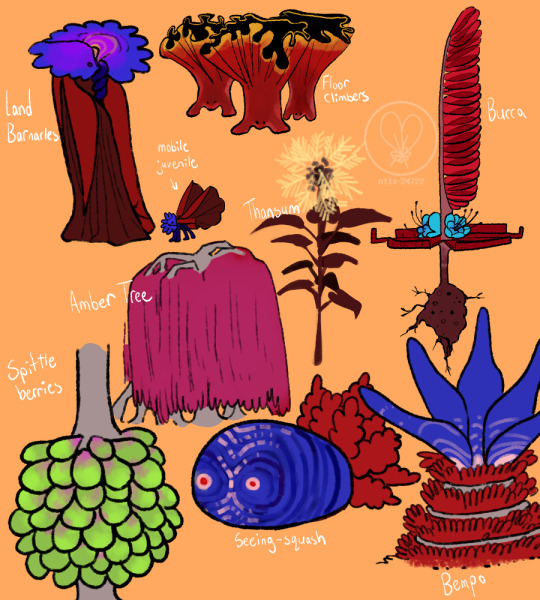
This post is more for me and actually putting to paper the things that the Bolur species would eat. I had more fun than I thought I would've.
cw? tw? for unsanitary mentions sorta
Going from top-to-right,
Land Barnacles
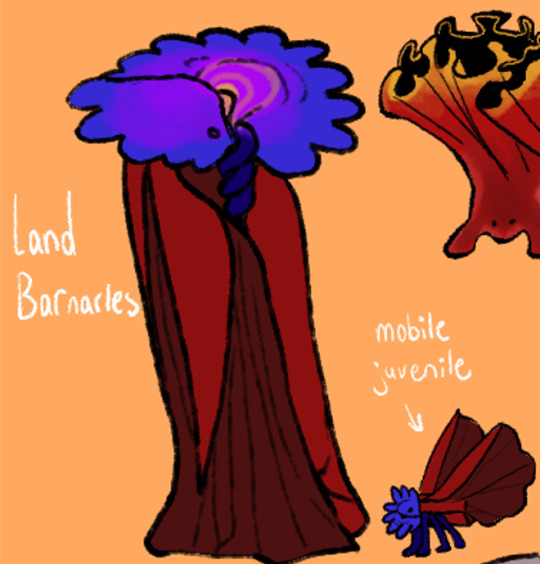
Exactly what they sound like. Did you know that Earth barnacles are arthropods? That they're crustaceans? I got inspo from that. Juveniles, like Earth barnacles, are mobile and have very inefficient, blanket-y wings that they will use to one day cement themselves onto the ground, hopefully next to another one of their barnacle colleagues for reproductive purposes. Their abdomens are actually folded so that their anuses are right next to their mouths, because like an aphid, they have a very sugary, liquidy waste that (alongside their floral-looking heads) brings in a lot of bugs for them to eat! When bugs try to feed on their waste, they use the remnants of their tube feet to grab them and eat them.
Zebrapeople cultivate land barnacles in order to drill holes right into their abdomens and harvest their honeydew sewage. It's like a gross version of drilling holes in maple trees for maple syrup. I imagine they view it kind of like hot dogs, so tasty but so grossly made...
Floor Climbers

They're these kind of "flatworms" that eat underwater plant growths and store them in their skin to be able to photosynthesize for themselves. Their blankety backsides is the part of them with the most, so they evolved to completely have that part of them be a solar panel blanket and just walk with their front.... well, they never had legs, but they now have "legs." They're handstanding everywhere
They're invasive little shits that reproduce like rabbits. They're introduced to small, usually music man-made bodies of water in order for them to completely take over, and for the music men to harvest. They're really chewy and savory if you cook them right. Might be a little poisonous if you undercook them, so it's better to burn your climbers than have them medium rare.
Bucca

THATS TUBER, BABY
They evolved that Phat Root in order to anchor themselves in the water. They have flowers at the base of their main stem for bugs that walk on water to pollinate, and to make sure they don't move around too much, their stem and leaves became super aerodynamic to the point it looks like a big red feather coming out of the water.
Amber Tree

MISNOMER. NOT A TREE. LAND CORAL! Sometimes called "cow sails" from the way its topmost "branches" and leaves just hang down over everything like a debu's sail does. Since its branches are thin, its limestone outer layer is at risk of breaking a lot, so it evolved this really thick sap so bugs don't try and take advantage of its downfall.
Except, well, Debu took advantage of its sap. It's a cash crop! Badlands Debu harvest its super thick, fast drying sap to kind of make instant-amber, dipping various things in it to make jewlery. Things like...
Thansum

Imagine if a sunflower, when it got pollinated, became a giant dandelion. That's thansum, the complimentary Debu cash crop to amber trees, which is the most popular thing to dip in its amber. But it's not just a Debu cash crop, it's also used to make paper and cloth for zebrapeople, mostly zebraelves. They crush its seedlings up and add water to make a thansum-meal out of it - if they use more seedling and dry it, it becomes paper. If they use more fluff, then it becomes cloth! Or they can eat thansum-meal straight up if they're desperate. It's not poisonous, but it's a very sad meal, don't eat thansum-meal
Spittle Berries

So, i've been excited to talk about this, because lemme tell you the more popular way that Bolur plants reproduce. Spittle berries are fruits, they are Bolur fruits, but bolur fruits are special - they are the flower, the leaf, and the fruit all at once. The method is that fruits are made through leaves, leaves that're inflated full of gametes covered in a soft shell (think like a pomegranate seed) and fruit "meat", which in turn also colors them a striking (ususally cool) color. When something eats a Bolur fruit, the soft shell that their sperm and eggs were covered in gets dissolved and they meet up together in the stomach. The gametes themselves are made of some gross, hard-to-digest material so that they remain unharmed, and so that they can become embryos by the time whatever ate it passes them through their system, right into some fresh fertilizer that they can grow out of. Spittle berries are the least interesting fruit in that it's just a fruit, but they're a perfect introductory fruit for the weirder ones, like:
Seeing-Squash

The only fruit actively being selected for cuteness! It's also a debu specific - the squash evolved to be eaten specifically by mountain cows since the shell their gametes are covered in are too tough to be digested by most other animal. So if a zebraperson wants to eat, they might want to take those out lest those bigass "seed" gametes gives them blockage.
It's less cuteness, but more "liveliness," if that makes any sense? Looking more and more like a little animal, a little dude. The eyes are getting bigger and the originally modest striping is becoming more exaggerated to look like a spitting monkey.
And finally,
Bempo

The only plant here to have a skeleton. It's the "shrub" version of a land coral where its base will have a dense limestone skeleton for its photosynthetic parts to pop out of, and soft pith to be protected underneath. Bempo actually takes forever to grow, because it takes years for it to build up its "pyramid" base. But when it does, then you are set, because fruit-bearing coral-shrubs like bempo have the shortest growth times for its fruit to the point where you can watch and hear the growth of its giant fruit plates that adorn the top of its base.
Those fruit plates also have a skeleton of their own, but it's only a single "bone," like if a plant had a baculum for its fruit.
#ntls-24722#speculative biology#speculative botany#spec evo#spec bio#worldbuilding#agriculture#speculative agriculture#digital
45 notes
·
View notes
Text

A Chinese mitten crab. Scientists from the Natural History Museum have built traps to manage UK’s rising numbers of the furry crustaceans. The crabs, which can grow bigger than a 10in dinner plate, are an invasive species that prey on our native fauna – ‘eating us out of house and home’, as one researcher put it
Photograph: Frank Hecker/Alamy
#frank hecker#photographer#alamy#chinese mitten crab#crab#marine life#natural history museum#crustaceans#nature#animal
40 notes
·
View notes
Text

Beneath the shimmering blue, the lionfish glides gracefully through its aquatic world at the Denver Aquarium. With its delicate fins and bold stripes, this exotic beauty brings a piece of the ocean's vibrant tapestry to life, weaving between coral structures with effortless elegance. Capturing both the wonder and mystique of marine life, this photo invites us into the colorful depths, a world where every movement tells a story of adaptation and survival. The lionfish, both mesmerizing and dangerous, reminds us of the ocean's allure and its secrets yet to be uncovered.
The lionfish, belonging to the genus Pterois, is a striking marine species native to the Indo-Pacific region. Recognizable by their bold maroon and white stripes and elongated, venomous spines, lionfish are both captivating and hazardous. Their venomous dorsal spines can inflict painful stings, posing risks to divers and predators alike.
Encyclopedia Britannica (source)
In recent decades, lionfish have become invasive in the Atlantic Ocean, particularly along the southeastern United States coast, the Gulf of Mexico, and the Caribbean Sea. Their introduction is largely attributed to aquarium releases. Lacking natural predators in these new environments, lionfish populations have surged, threatening native marine life and disrupting local ecosystems.
NOAA Ocean Service (source)
Lionfish are voracious predators, feeding on over 70 species of fish and crustaceans, including ecologically and economically important species. Their feeding habits can significantly reduce native fish populations, leading to imbalances in reef ecosystems.
Wildlife Informer (source)
Efforts to manage the lionfish invasion include promoting them as a food source, encouraging fishing and consumption to help control their numbers. Despite their venomous spines, lionfish are safe to eat once properly prepared, and their white, flaky meat is considered a delicacy.
Ocean Conservancy (source)
Understanding the biology and ecological impact of lionfish is crucial for developing effective management strategies to mitigate their invasive spread and protect native marine ecosystems.
#Photography#Original Photography#Aquarium Photography#Underwater World#Marine Life#Lionfish#Ocean Aesthetic#Coral Reef#Exotic Fish#MissedMileMarkers
27 notes
·
View notes
Text
TWISTED WONDERLAND OC

Name: Amin Adel Al-Farooq
Grade/Class: Freshmen/Class B (No. 11)
Birthday: October 24rd
Age: 16
Height: 165 cm
Dominant hand: Right
Homeland: Scalding Sands
Club: Magic Shift/Spell Drive
Best Subject: Astrology
Hobbies: Taking care of virtual pets
Pet Peeves: Invasion of personal/Having to repeat himself
Favorite food: Kibbeh
Least favorite food: Crustaceans
Likes: Cats, Stars, Good people
Dislike: Delinquents, ghosts, teasing
Talent: Combat
. . .
Amin is a student from Scarabia who is always accompanying Kalim and Jamil. His distant attitude makes him strange in the eyes of many.
The mysterious and distant boy actually hides a secret: He she's a woman and Amin isn't even her real name. (She isn't trans. In the universe of my ocs NRC remains a school just for boys, but the reason for adopting a male identity comes from her backstory)
Amin is a person who always has a closed or tired face. Most of the time, Amin is stuck in his thoughts instead of interacting with others.
When Amin tries to start a conversation with someone he doesn't know, 99% of the time the conversation can turn into something really awkward or quite edgy(depends on the mood lol)
Although he isn't very good at talking and is a little shy/embarrassed, Amin is not afraid to show his thoughts and fight for them. This attitude of his makes him get into several fights, which has earned him a reputation as a troublemaker.
Despite acting this way and having a short temper, Amin hates delinquents who break the rules. Whenever he can, Amin punishes anyone he considers a deliquent to 'save' them
With people close to him, Amin reveals himself to be a courageous, agitated, stubborn, playful, teasing and loyal person. But of course, that's not how he feels at all.
In fact, Amin is a pessimist and a person who has struggled with grief for a long time. He sees himself as an impostor who doesn't deserve happiness and has no reason to live other than to continue someone else's legacy. Amin constantly blames himself for the past and has a huge inferiority complex, but he refuses to demonstrate his weakness and the truth to others.
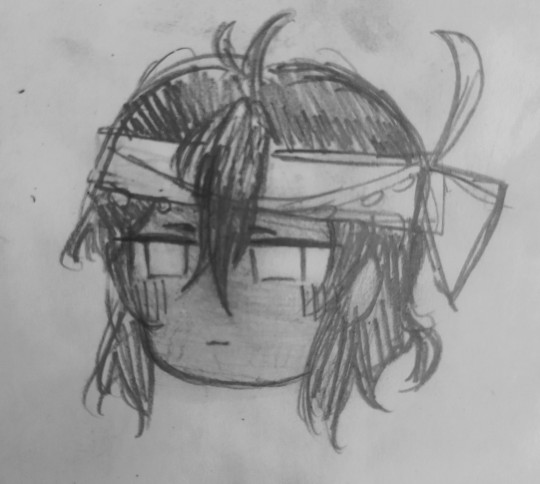
FACTS
Amin is twisted from the guards from Aladdin
He has incredible swordsmanship
Despite his small appearance, Amin is strong and agile
He knows parkour
Amin has combat magic that is far advanced compared to other freshmen, however his general magic (like levitating things, cleaning magic, coloring magic, etc.) IS REALLY BAD
By having such poor magic and almost failing many classes, Amin makes up for his lack of skill in written or physical activities (or combat)
Amin is banned from Mostro lounge
The headband he wears is a gift from Kalim
APPEARANCE
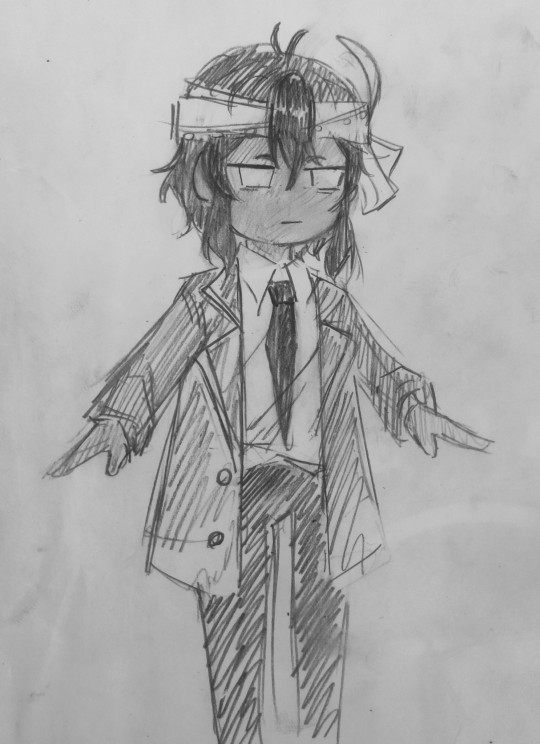
Amin has short, dark hair with bangs. His skin is dark and his eyes are dark brown
He always wears clothes much larger than his size and always wears a headband
Most of the time, he wears bandages around his hands that go up to his elbow.
. . .
Note: Since Aladdin is a racist film, I tried to do some research to avoid something that would be hurtful to people from the Middle East. If you know the Middle East well and noticed that there is something wrong with this post, please let me know and I will review it immediately, thank you!
Tag: @cyanide-latte @theleechyskrunkly @thehollowwriter @distant-velleity @tixdixl @rainesol @oya-oya-okay @boopshoops @br3adtoasty
#twisted wonderland#twst oc#night raven college#scarabia#scarabia oc#jamil viper#kalim al asim#amin adel al farooq#twisted wonderland oc#disney twisted wonderland
60 notes
·
View notes
Text
Daily fish fact #677
Black buffalo!

This fish is a bottom feeder and tends to feed on crustaceans and algae, though it's been found that most of their edible diet consists of invasive clams in some areas! Besides food intake, the black buffalo also ingests large amounts of sand, which makes up nearly half of everything they consume.
82 notes
·
View notes
Text

Adventures in the Crab Crotch Nebula Chapter 2 - "A warning from the cold grave of space."
"If you go to the Crab Crotch Nebula, you ... will ... die!"
Doctor Spector picked himself up off the hard ground. What had just happened? Who was this space phantom that appeared out of nowhere and had issued such a dire warning? It had to be the enemy alien king using his crustacean telepathy across the vastness of the void to make Space Force call off their retaliatory invasion.
Now was not the time for panic.
Doctor Spector dusted himself off, looked around nervously and then hurried back to his lab at Space Force Headquarters.
The first mission must have failed. They hadn't heard anything since the captain of the first space cruiser and her crew disappeared inside the Crab Crotch Nebula.
There was no doubt in Dr. Spector's mind. It was time to call in Captain Boomer Thrice.
#funny#gif#meme#lol#serial#vintage#old time movies#sci fi#adventures in the crab crotch nebula#ghostriderslade#horror#film
8 notes
·
View notes
Text
-invertebrates, crustaceans, and urchins-
it is mackerel day at the local aquarium and
i am a moray eel so smooth to the touch
like aqueous manta ray mantles but
did you know that sea turtles sing?
because they do they sing when the frigates
seize them from their freckled eggshells and
they leave behind the sun-warmed sand while
i slip and creep through clownfish apartments
perhaps the sun’s rays shall sprout fingers and
fetch me inquisitively into the cloud’s breath though
for all the pickle green floundering in the world i am
unable to do much other than smolder.
they call me unagi so i stand on rice beaches
while smelling Goliath grouper frying
ozone and gasoline and a fish-breath stench
marbled orange and ultramarine water or
is it a coruscant shimmer that proclaims
i have become a horseshoe crab living in
the skeleton of a lemon shark where citrus still lingers so
occasionally free divers feed me invasive species
a lamprey, lionfish, and sea walnut buffet yet
when my claws touch their gummy black gloves
they jump as if struck by something electric.
#poems and poetry#poets on tumblr#original poem#poem#poetry#poems on tumblr#prose#prose poem#spilled poetry#writers and poets#poetic prose#prose poetry#creative writing#writer stuff#writing poetry#writers on tumblr#writeblr#writing#writerscommunity#poetsandwriters#poetblr#ii's poems#spilled writing#spilled thoughts#spilled ink#spilled words
12 notes
·
View notes